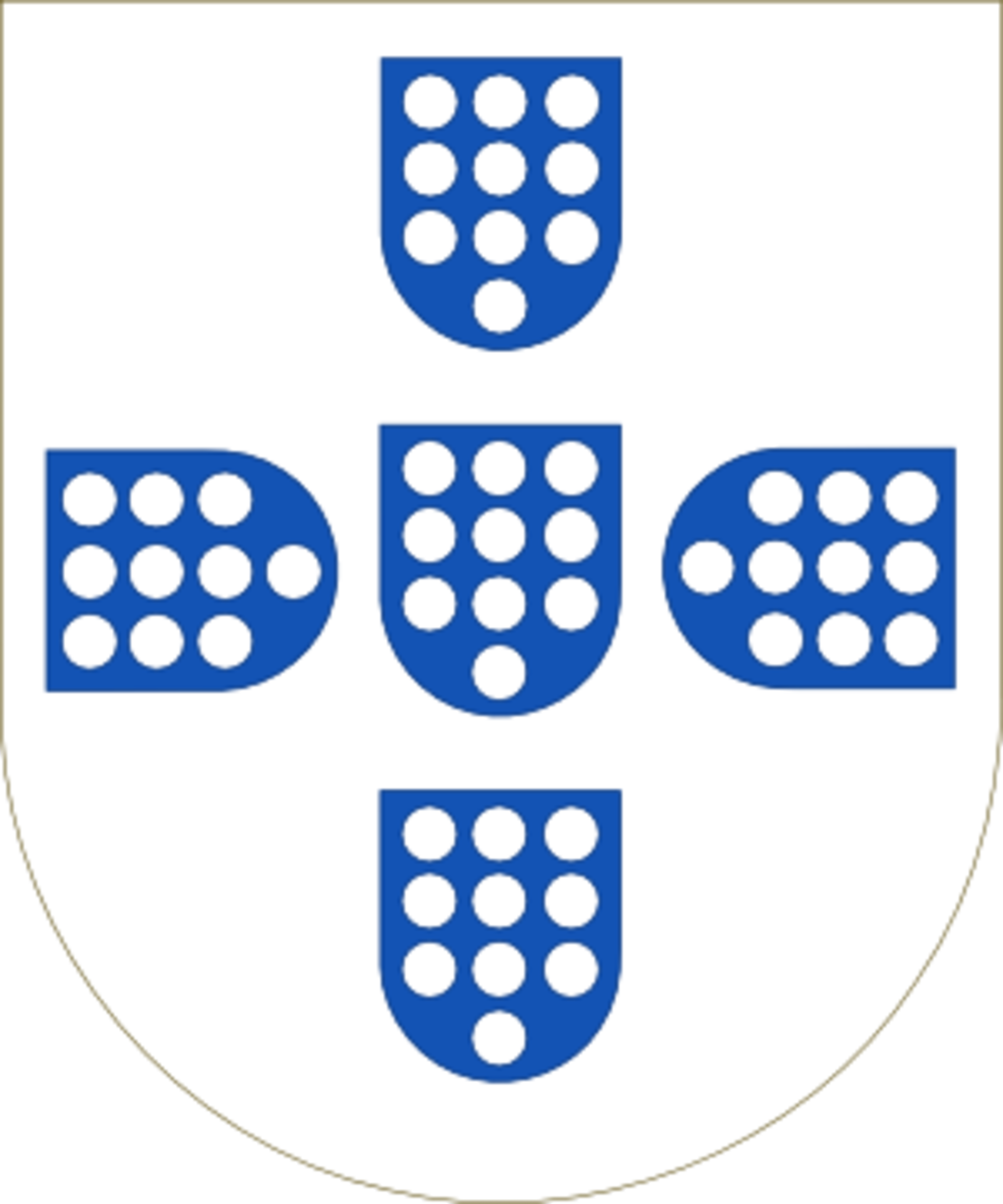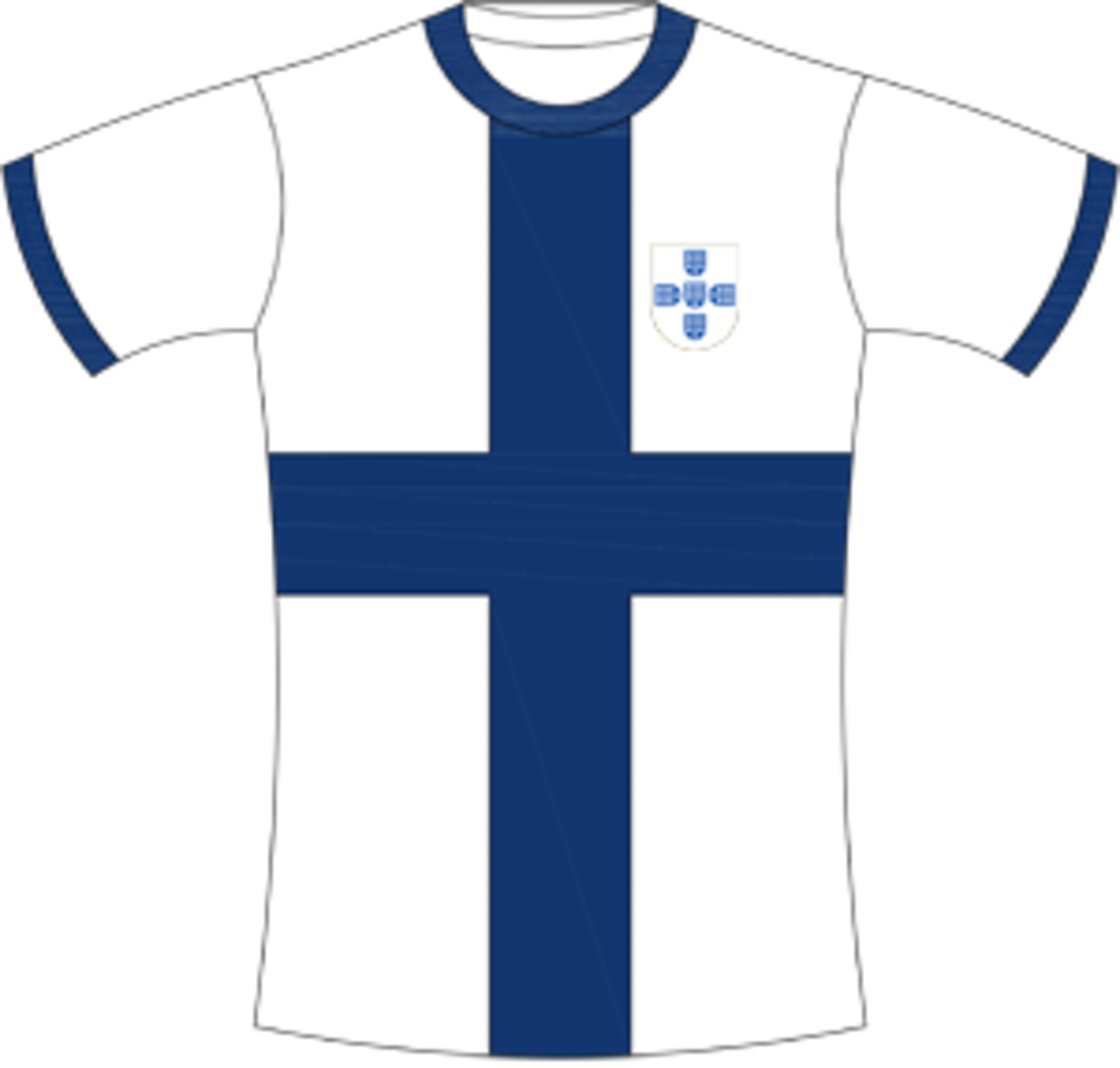Kingdom of Portugal
In the second half of the 11th century, Henry (ruled 1069 – 1112), the duke of Burgundy, and the son-in-law of the King of Leon and Castile, had been given as a gift the area between the rivers Douro and Minho, for which the term Portugale had already been used, derived from the name of the ancient settlement of Portus Cale, at the site of the city of Porto.

Coat of arms

Shirt
| Position | First name | Last name | Mjesto rođenja | Like | Dislike | |
|---|---|---|---|---|---|---|
| GK | Jose | SA | Braga |
4 |
0 |
|
| GK | Miguel | SILVA | Santa Eufémia de Prazins |
2 |
0 |
|
| GK | Rui | PATRICIO | Marrazes |
5 |
0 |
|
| DC | Bruno | ALVES | Póvoa de Varzim |
7 |
0 |
|
| DC | Jose | FONTE | Panafiel |
5 |
0 |
|
| DC | Luis | NETO | Povoa de Varzim |
2 |
0 |
|
| DC | Paulo | OLIVEIRA | Vila Nova de Famalicão |
3 |
0 |
|
| DRL | Ricardo | PEREIRA | Lisbon |
1 |
0 |
|
| DRL/MR | Nelson | SEMEDO | Lisbon |
7 |
0 |
|
| DL | Fabio | COENTRAO | Vila do Conde |
9 |
0 |
|
| DL | Vitorino | ANTUNES | Freamunde |
1 |
0 |
|
| DC/DMC | Daniel | CARRICO | Cascais |
3 |
0 |
|
| DMC | Miguel | VELOSO | Coimbra |
6 |
0 |
|
| DMC | Ruben | NEVES | Mozelos |
3 |
0 |
|
| MC | Andre | GOMES | Vila Nova de Gaia |
7 |
1 |
|
| MC | Bruno | FERNANDES | Maia |
4 |
0 |
|
| MC | Renato | SANCHES | LISBON |
10 |
3 |
|
| MRC | Andre | ANDRE | Vila do Conde |
2 |
0 |
|
| MR/DR | Adelino André | VIERINHA | Guimarães |
2 |
0 |
|
| MRLC | Joao | MARIO | Porto |
10 |
0 |
|
| AMC | SERGIO | Oliveira | Paços de Brandão |
1 |
0 |
|
| AMRLC | Bernardo | SILVA | Lisbon |
11 |
0 |
|
| AMRLC | Luís Miguel Afonso Fernandes | PIZZI | Bragança |
3 |
0 |
|
| AMRL | Gil | DIAS | Gafanha da Nazaré |
1 |
0 |
|
| AMRL | Gonacalo | GUEDES | Benavente |
8 |
0 |
|
| AMRL | Rafa | SILVA | Vila Franca de Xira |
3 |
0 |
|
| AMRL | Ricardo | QUARESMA | Lisbon |
6 |
0 |
|
| SS/AMRL | Daniel | PODENCE | Oeiras |
2 |
0 |
|
| SS/FRLC | Diego | JOTA | Massarelos |
3 |
0 |
|
| FRLC | Ivan | CAVALIERO | Vila Franca de Xira |
1 |
0 |
|
| FC/SS | Andre | SILVA | Baguim do Monte |
8 |
0 |
(Toda part of central and northern Portugal)
His successor Afonso Henriques (ruled 1143 – 1185) had made use of the disorder in the Kingdom of Leon and Castile, and named himself an independent ruler, and in mid-12th century, he had raised the County of Portugal to the status of kingdom. He had named the well fortified city of Guimaraes his seat, near the archdiocese center in Braga. In the Crusades against the Moors, he had won the southern parts, together with the city of Lisbon, onto which he had extended the name of Portugal. Afonso had asked for the papal recognition of his newly-founded kingdom, presenting it as a form of war legitimated by God. At the same time, he and his successors had fought against the rulers of Castile in the north.
The Portuguese Reconquista and the expansion of the state towards the south will end in the 13th century, after the wars had thoroughly ravaged the land after a long period of the Muslim peace. Portuguese society, with its prominently powerful Church and Inquisition, had, for centuries thereafter, been divided into the agrarian north, dominated by the feudal hierarchy of social relations, the manufacturing and mercantile middle part, and the south, which was dominated by religious knightly orders. The Order of Aviz, in particular, had played a great part in the Reconquista. They were founded in mid-12th century, but had got their name for the fortress of Aviz, which they had gained at the beginning of the 13th century. The Grand Master of the Order shall also found the royal dynasty of Aviz, which will rule Portugal from 1385 to 1580.
Sources
- David BIRMINGHAM, Povijest Portugala, Zagreb, 2004.
- Felipe FERNANDEZ-ARMESTO, Narodi Europe, Zagreb, 1997.
- ''Avis'', http://www.enciklopedija.hr/Natuknica.aspx?ID=4859
- ''Portugal'', http://www.enciklopedija.hr/Natuknica.aspx?ID=49619
- Grb: https://en.wikipedia.org/wiki/Coat_of_arms_of_Portugal
